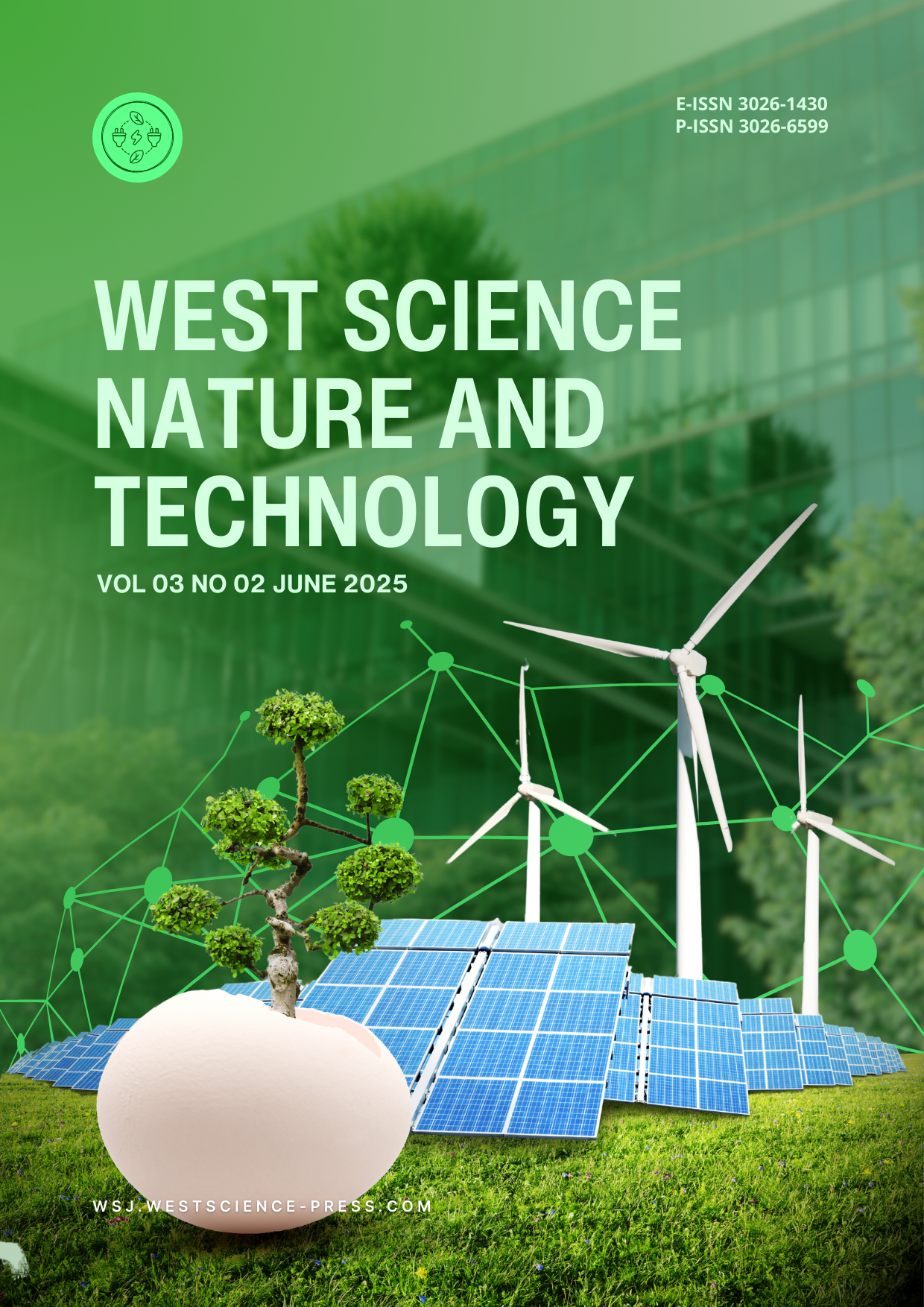Trends and Hotspots in Forest Conservation Research: A Bibliometric and Network Analysis from Scopus Data
DOI:
https://doi.org/10.58812/wsnt.v3i02.1999Keywords:
Forest Conservation, Forest Management, Bibliometric Analysis, VOSviewerAbstract
This study presents a comprehensive bibliometric and network analysis of forest conservation research published between 2000 and 2024 using data retrieved from the Scopus database. By employing VOSviewer, the study explores co-authorship networks, country collaborations, keyword co-occurrence, thematic evolution, and research intensity. The findings reveal that forest conservation and forest management are the central pillars of the field, interconnected with emerging themes such as biodiversity, climate change, carbon sequestration, and environmental protection. The analysis highlights key contributors—including influential authors and globally active countries like the United States, Germany, China, and Brazil—while also identifying underrepresented regions in collaborative networks. Temporal overlay mapping shows a shift from traditional forest policy and resource management toward integrative themes aligned with global sustainability agendas. The study concludes that forest conservation research has matured into an interdisciplinary and globally relevant field, yet recommends greater attention to socio-cultural dimensions, equity issues, and increased engagement from scholars in the Global South to ensure inclusive and effective conservation strategies.
References
[1] S. Schwartzman, A. Moreira, and D. Nepstad, “Rethinking tropical forest conservation: perils in parks,” Conserv. Biol., vol. 14, no. 5, pp. 1351–1357, 2000.
[2] A. Young, D. Boshier, and T. Boyle, Forest conservation genetics: principles and practice. CSIRO publishing, 2000.
[3] J. E. M. Arnold and M. R. Pérez, “Can non-timber forest products match tropical forest conservation and development objectives?,” Ecol. Econ., vol. 39, no. 3, pp. 437–447, 2001.
[4] J. Börner, D. Schulz, S. Wunder, and A. Pfaff, “The effectiveness of forest conservation policies and programs,” Annu. Rev. Resour. Econ., vol. 12, no. 1, pp. 45–64, 2020.
[5] M. Hermy, O. Honnay, L. Firbank, C. Grashof-Bokdam, and J. E. Lawesson, “An ecological comparison between ancient and other forest plant species of Europe, and the implications for forest conservation,” Biol. Conserv., vol. 91, no. 1, pp. 9–22, 1999.
[6] I. A. Bowles, R. E. Rice, R. A. Mittermeier, and G. A. B. da Fonseca, “Logging and tropical forest conservation,” Science, vol. 280, no. 5371. American Association for the Advancement of Science, pp. 1899–1900, 1998.
[7] J. Gan and B. A. McCarl, “Measuring transnational leakage of forest conservation,” Ecol. Econ., vol. 64, no. 2, pp. 423–432, 2007.
[8] R. P. Chaudhary, “Forest conservation and environmental management in Nepal: a review,” Biodivers. Conserv., vol. 9, pp. 1235–1260, 2000.
[9] K. V Pawar and R. V Rothkar, “Forest conservation & environmental awareness,” Procedia Earth Planet. Sci., vol. 11, pp. 212–215, 2015.
[10] J. Börner et al., “Emerging evidence on the effectiveness of tropical forest conservation,” PLoS One, vol. 11, no. 11, p. e0159152, 2016.
[11] M. M. Kreye, D. C. Adams, and F. J. Escobedo, “The value of forest conservation for water quality protection,” Forests, vol. 5, no. 5, pp. 862–884, 2014.
[12] C. Crook and R. A. Clapp, “Is market-oriented forest conservation a contradiction in terms?,” Environ. Conserv., vol. 25, no. 2, pp. 131–145, 1998.
[13] B. Agarwal, “Gender and forest conservation: The impact of women’s participation in community forest governance,” Ecol. Econ., vol. 68, no. 11, pp. 2785–2799, 2009.
[14] C. Kremen et al., “Economic incentives for rain forest conservation across scales,” Science (80-. )., vol. 288, no. 5472, pp. 1828–1832, 2000.
[15] A. D. Rodewald and M. H. Bakermans, “What is the appropriate paradigm for riparian forest conservation?,” Biol. Conserv., vol. 128, no. 2, pp. 193–200, 2006.
[16] N. Donthu, S. Kumar, D. Mukherjee, N. Pandey, and W. M. Lim, “How to conduct a bibliometric analysis: An overview and guidelines,” J. Bus. Res., vol. 133, pp. 285–296, 2021.
Downloads
Published
Issue
Section
License
Copyright (c) 2025 Loso Judijanto

This work is licensed under a Creative Commons Attribution-ShareAlike 4.0 International License.






















 Instagram
Instagram 